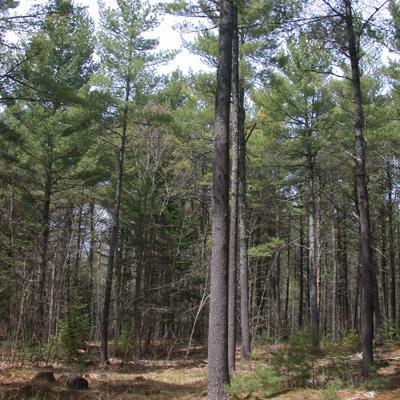Growth, Yield, and Financial Returns of Eastern White Pine under Contrasting Silvicultural Systems: Low-Density Crop-Tree Management vs. Conventional Thinning

Despite over a century of research on the silviculture (growth and regeneration of forest trees) of eastern white pine in New England, controversy remains over such fundamental issues as stand density management, pruning, and regeneration methods. Should forest managers strive to grow high volumes of small sawlogs using minimal investments and traditional conservative thinning schedules? Or should managers focus on a more intensive, low-density, high-investment crop-tree approach that sacrifices total yield to achieve higher clear-lumber yields and greater economic returns?
NSRC researchers used 17 years of data from a long-term study, established in 1991 on the University of Maine's Demeritt Forest, designed specifically to compare these contrasting systems. Low-density management resulted in dramatically larger-crowned crop trees that produced bigger and less tapered butt logs (the most valuable portion of the tree), significantly higher rates of volume growth per tree, and only somewhat less volume growth per hectare. Interestingly, crop trees under conventional management experienced little diameter growth at the top of the butt log, revealing potential for slow closure of pruned branch wounds and a lesser ability to recover pruning expenses.
Contrary to previous belief, researchers found that thinning well below conventional levels did not waste growing space per tree or for the stand as a whole; this finding challenges the notion of using the traditional 1973 eastern white pine stocking guide for target thinning densities. While financial comparisons of growth results were hampered by inaccuracies of the computer growth model that researchers used, the promising growth results of low-density thinning make it a viable alternative to conventional management.
Download printable version [PDF]
Download full final report [PDF]
